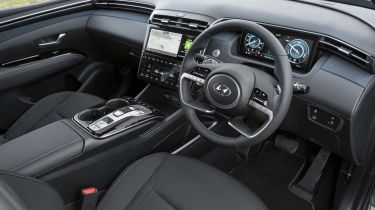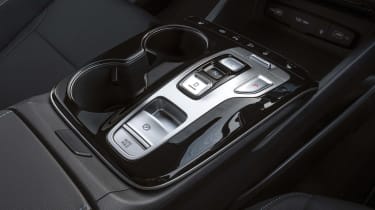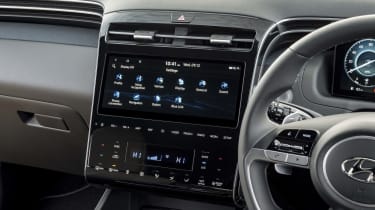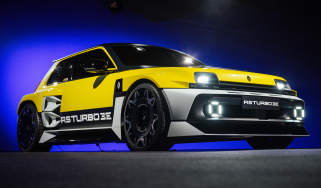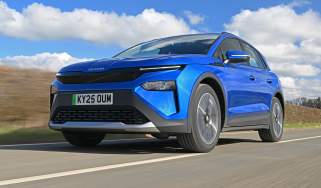Hyundai Tucson Hybrid review: interior, dashboard & infotainment
Premium-quality materials and cutting-edge on-board technology combine to make the Tucson's interior one of the best in its class
Hyundai didn't just spend all its time making the latest Tucson look great from the outside; there's a major improvement over the previous model inside, too. That car was functional but pretty plasticky from the driver's seat, and although this Tucson won’t set the world on fire with its interior design, it feels very up-to-date regardless. Material quality has improved, and the Tucson’s cabin now feels like something from a ‘premium’ brand.
Hyundai Tucson Hybrid dashboard
The dashboard is designed to reflect the look of the Tucson's front end and does so to great effect; chrome trim, good-quality materials, ambient lighting and a pair of 10.25-inch screens all contribute to a plush and modern-feeling cabin. The heating and ventilation controls get their own dedicated area rather than being buried in a screen menu, although they are touch-sensitive and can be tedious to use compared with a traditional rotary dial.
There are a number of useful features to find, such as a real-time blind-spot display shown when you indicate and a reminder of what lighting setting you’ve just selected. With no cowl for the digital instrument cluster, the dashboard feels spacious and uncluttered.
It all feels very well integrated, and while there isn't much in the way of colour variety – most models are available with either black or white upholstery – there is at least a nice mix of finishes. Our biggest bugbear, though, is the abundance of piano black trim; while this certainly looks lovely in the showroom, it’s quick to attract dust, fingerprints and scratches.
Equipment, options & accessories
The Tucson is available in five trim levels: SE Connect, Premium, N Line, N Line S and Ultimate. Prices start at around £37,000, with 17-inch alloys, dual-zone air-conditioning, heated folding door mirrors and a leather steering wheel amongst the standard equipment, plus parking sensors, a rear-view camera and a suite of active safety and driver assistance features, such as cruise control.
Equipment increases gradually with each step up; the sporty N Line models add 19-inch alloy wheels, black exterior trim, with the ‘S’ getting luxuries like a heated steering wheel and adaptive cruise control. Premium models seem to offer a good balance of cost versus kit, with added LED headlights, wireless phone charging, 19-inch alloy wheels, a premium sound system and ambient lighting on the kit list.
Top-spec cars get the appropriate designation of Ultimate and sport luxuries such as leather upholstery, three-zone climate control, heated rear seats, a powered tailgate, a panoramic sunroof and even more safety equipment – but for a hefty list price.
Infotainment, apps & sat nav
While several rivals such as the Kia Sportage make buyers pay to get the full infotainment technology experience, all Hyundai Tucson models get twin full-size 10.25-inch screens as standard. These run Hyundai’s BlueLink software and come bundled with built-in sat nav and a whole host of apps including the meditative ‘Sounds of Nature’ and ‘Quiet Mode’ which turns off the rear speakers in order not to disturb a sleeping toddler. Apple CarPlay and Android Auto are also standard if you’d rather use your phone’s software.
A couple of criticisms we have is that we wish the dials would display full sat nav maps, like what you get in the Volkswagen Tiguan eHybrid. A physical ‘Home’ button would also be appreciated, as the icon serving this purpose at the top of the screen can be a little difficult to hit when on the move.

